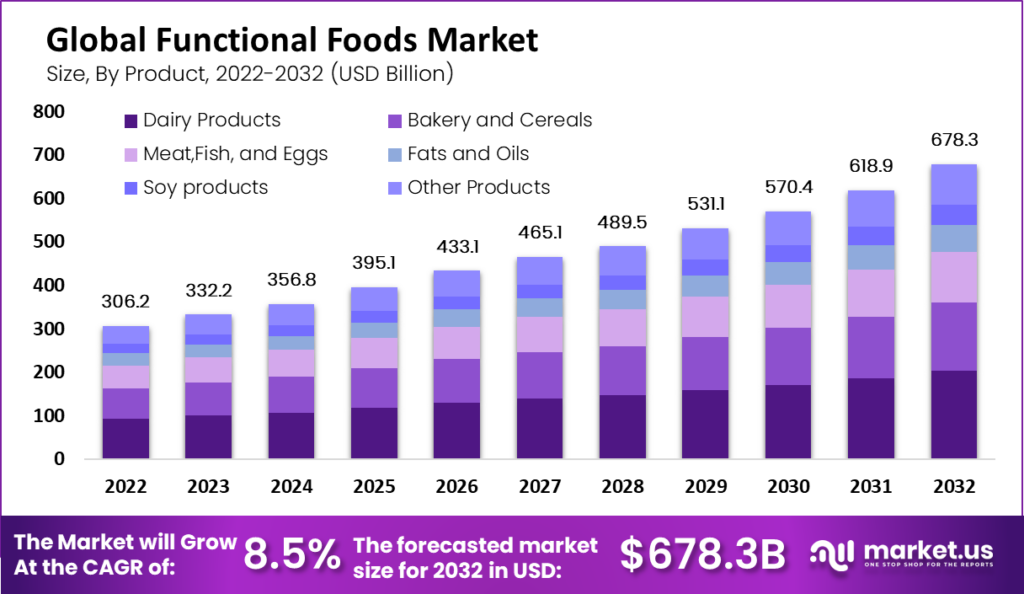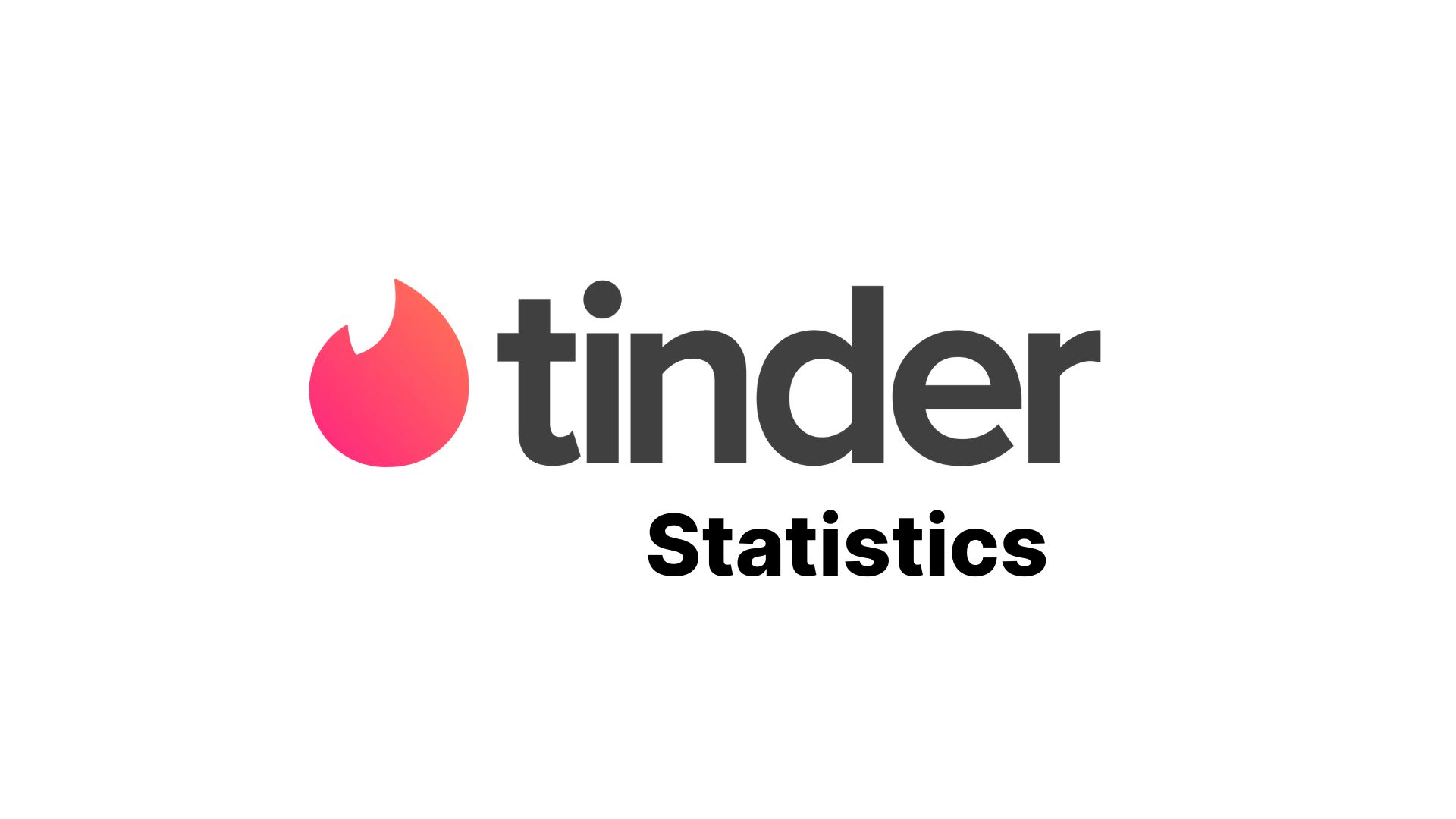Functional Foods Market Revenue to Cross USD 678.3 Billion, Globally, by 2032

Page Contents
Market Overview
Published Via 11Press : Functional foods market are those that have a beneficial effect on one or more functions of the body, beyond their basic nutritional value. They contain bioactive compounds such as antioxidants, probiotics, and phytochemicals that provide health benefits beyond traditional nutrition. The demand for functional foods has been increasing in recent years due to growing consumer awareness of the link between diet and health.
The Functional Foods Market size is expected to be worth around USD 678.3 Billion by 2032 from USD 306.2 Billion in 2023, growing at a CAGR of 8.5% during the forecast period from 2022 to 2032.
Despite the potential benefits of functional foods, it is important to note that these products should not be seen as a replacement for a balanced diet or medical treatment. Consumers should consult with healthcare professionals before incorporating them into their diets, especially if they have any underlying health conditions or allergies.
Request For Sample Report Here: https://market.us/report/functional-foods-market/request-sample/
Key Takeaway
- Growing consumer interest: Consumers are increasingly conscious of their health and are seeking out foods that offer specific health benefits. This growing interest in wellness and preventive healthcare has fueled the demand for functional foods.
- Diverse product offerings: The functional foods market encompasses a wide range of products, including fortified foods, probiotics, prebiotics, omega-3 fatty acids, dietary supplements, and more. This diversity allows consumers to choose products that cater to their specific health needs and preferences.
- Health benefits and claims: Functional foods often come with scientifically-backed health claims, such as promoting heart health, improving digestion, boosting immunity, or supporting brain function. These claims are backed by research and provide consumers with added assurance about the potential benefits of the products.
- Innovation and product development: Food manufacturers and suppliers are investing in research and development to create new functional food products that target specific health concerns. This includes incorporating novel ingredients, developing advanced delivery systems, and creating personalized nutrition options.
Regional Snapshot
- North America: North America is an attractive market for functional foods due to rising consumer health awareness of their benefits and growing health awareness overall.
The United States of America leads this regional functional food market, boasting an expansive variety of functional food offerings that focus heavily on nutrition and well-being. Canada also holds significant ground in this market with natural and organic functional food offerings dominating. - Europe: Europe is an established market for functional foods, with high consumer awareness and demand. Key countries for functional food sales here include Germany, France, and the UK due to a thriving health and wellness culture in these nations.
Functional dairy products, functional beverages, and fortified cereals are among the most beloved categories across Europe. - Asia Pacific: The Asian-Pacific region is witnessing rapid expansion of the functional food market as disposable incomes increase and urbanization continues. Furthermore, healthcare awareness continues to spread.
Japan boasts an established market for functional foods, with longstanding innovation and consumption habits for these items. China and India represent emerging functional food markets driven by large populations and rising health awareness.
Traditional functional food like herbal and botanical products are widely consumed across Asia. - Latin America: Latin America is experiencing a steady expansion of the functional food market as diet changes and health concerns take effect, Brazil being its dominant market due to a rising middle class focused on healthy lifestyle choices and an emphasis on maintaining wellness practices.
Mexico, Argentina, and Chile all show considerable promise as functional food markets, with growing consumer interest in products promoting weight management, digestive health, and overall well-being. - Middle East and Africa: Functional food consumption has steadily grown over time in both regions due to increasing awareness of health and wellness issues. UAE, Saudi Arabia, and South Africa are key markets in this region with increasing demands for functional beverages, fortified dairy products, and nutritional supplements.
Drivers
- Increasing health consciousness: Growing awareness of the importance of nutrition and its impact on overall health has led to a rise in demand for functional foods. Consumers are actively seeking out products that offer specific health benefits and help prevent chronic diseases.
- Aging population: With a rising aging population, there is an increased focus on healthy aging and disease prevention. Functional foods that target age-related health concerns, such as bone health, cognitive function, and heart health, are in high demand.
- Lifestyle changes and convenience: Busy lifestyles and changing dietary habits have created a demand for convenient and nutritious food options. Functional foods provide a convenient way for consumers to incorporate essential nutrients and health-promoting ingredients into their diets.
- Technological advancements: Advancements in food processing technologies and ingredient innovations have expanded the possibilities for creating functional foods. Improved formulation techniques and delivery systems enable manufacturers to develop products with enhanced bioavailability and effectiveness.
Restraints
- High costs: Functional foods often involve additional research, development, and manufacturing costs compared to regular food products. This can result in higher prices, making functional foods less accessible to some consumer segments.
- Lack of consumer awareness: While awareness of functional foods is increasing, there are still segments of the population that are unfamiliar with the concept or skeptical about their benefits. Educating consumers about the advantages of functional foods remains a challenge.
Opportunities
- Personalized nutrition: The growing field of personalized nutrition presents a significant opportunity for functional foods. Tailoring products to individual needs and preferences based on factors like genetics, biomarkers, and lifestyle can provide targeted health benefits.
- E-commerce and digital marketing: The rise of e-commerce and digital marketing platforms offers new avenues for functional food manufacturers to reach consumers directly. Online platforms provide opportunities for product promotion, personalized recommendations, and convenient purchasing options.
Make an inquiry before picking up this report @ https://market.us/report/functional-foods-market/#inquiry
Challenges
- Regulatory complexities: The functional foods market is subject to various regulations and guidelines regarding health claims, labeling, and safety. Navigating these regulatory requirements can be complex and time-consuming for manufacturers, especially when expanding into new markets.
- Scientific validation and research: Developing robust scientific evidence to support health claims is crucial for the success of functional foods. Conducting research studies and obtaining regulatory approval can be resource-intensive and time-consuming, posing challenges for manufacturers.
- Consumer skepticism and confusion: With a wide range of functional food products available, consumers may be overwhelmed by conflicting information and claims. Addressing consumer skepticism and providing clear and accurate information about product benefits can be challenging.
Key Market Players
- BASF SE
- Amway Corp.
- Herbalife International of America Inc.
- The Coca-Cola Company
- Cargill Incorporated
- GFR Pharma
- Cargill Incorporated
- Standard Functional Foods Group Inc.
- Arla Foods
- Nutri Nation
- Other Key Players
Market Segmentation
Product
- Soy products
- Bakery & cereals
- Meat, fish, & eggs
- Dairy Products
- Fats & oils
- Other Products
Ingredient
- Vitamins
- Minerals
- Dietary Fibers
- Carotenoids
- Probiotics & prebiotics
- Other Ingredients
Application
- Sport Nutrition
- Digestive Health
- Weight Management
- Immunity
- Clinical Nutrition
- Cardio Health
- Other Applications
Top Impacting Factors
- Health and wellness trends: Increasing consumer focus on health and wellness is a major driver for the functional foods market. As individuals become more health-conscious, they seek out foods that offer specific health benefits and align with their wellness goals. This trend is driven by factors such as the rising prevalence of chronic diseases, aging populations, and a growing desire for preventive healthcare.
- Consumer awareness and education: The level of consumer awareness and understanding of functional foods plays a crucial role in market growth. Educating consumers about the benefits and potential applications of functional foods is essential for market acceptance and adoption. Effective communication of scientific research, health claims, and product labeling helps build consumer trust and confidence.
- Research and innovation: Advances in research and innovation are key drivers of the functional foods market. Ongoing scientific studies and discoveries regarding the relationship between diet and health drive the development of new functional ingredients, formulations, and delivery systems. Continuous innovation helps manufacturers create products with enhanced efficacy, improved taste, and broader applications.
- Regulatory environment: Regulatory frameworks and guidelines governing functional foods have a significant impact on market dynamics. Regulations related to health claims, labeling, safety, and quality assurance vary across countries and regions. Compliance with these regulations is crucial for manufacturers to ensure consumer safety and market access. Regulatory bodies play a crucial role in evaluating scientific evidence and setting standards for functional food products.
- Industry collaborations and partnerships: Collaboration among industry stakeholders, including food manufacturers, research institutions, and healthcare professionals, drives innovation and market growth. Partnerships enable the sharing of expertise, resources, and technology, leading to the development of new functional food products and expanding market reach.
Future Trends in the Market
- Plant-based and alternative protein sources: The rising popularity of plant-based diets and the demand for alternative protein sources are expected to influence the functional foods market. Plant-based functional food products, such as plant-based meat substitutes, dairy alternatives, and protein-rich plant-based snacks, are likely to gain traction.
- Personalized nutrition: Advances in technology and an increased understanding of individual nutritional needs are driving the trend of personalized nutrition. Functional foods tailored to an individual's unique genetic makeup, health conditions, and lifestyle factors are likely to emerge. This trend may involve the use of personalized diagnostics, wearables, and digital platforms to deliver customized functional food solutions.
- Gut health-focused products: The importance of gut health in overall well-being is gaining recognition. Functional foods targeting gut health, such as probiotics, prebiotics, and fermented foods, are expected to experience significant growth. These products support digestive health, enhance immune function, and contribute to overall wellness.
- Clean label and natural ingredients: Consumers are increasingly seeking clean-label products with transparent ingredient lists. Functional foods with natural and recognizable ingredients, free from artificial additives and preservatives, are likely to be favored by health-conscious consumers. Natural sweeteners, plant-based fats, and minimally processed ingredients will continue to gain popularity.
- Cognitive health and brain-boosting ingredients: With an aging population, there is a growing focus on cognitive health and brain function. Functional foods containing ingredients like omega-3 fatty acids, antioxidants, vitamins, and minerals that support brain health and cognitive performance are expected to see increased demand.
Recent Developments
- In March 2022, Danone introduced their new drinkable yogurt Activa+, which offers better immunity and health. Activa+ contains zinc vitamins D and C to maintain a good immune system.
- In July 2022, Laira Superfood launched their new plant-based protein bar which is made from hemp seeds, dietary fibers, peas, and all the needed amino acids.
Report Scope
| Report Attribute | Details |
| The market size value in 2022 | USD 306.2 Bn |
| Revenue Forecast by 2032 | USD 678.3 Bn |
| Growth Rate | CAGR Of 8.5% |
| Regions Covered | North America, Europe, Asia Pacific, Latin America, and Middle East & Africa, and Rest of the World |
| Historical Years | 2017-2022 |
| Base Year | 2022 |
| Estimated Year | 2023 |
| Short-Term Projection Year | 2028 |
| Long-Term Projected Year | 2032 |
Frequently Asked Questions
Q: What is the current size of the Functional Foods Market?
A: The Global Functional Foods Market size is USD 306.2 Billion in 2022.
Q: What is the projected growth rate for the Functional Foods Market?
A: The Functional Foods Market is expected to grow at a CAGR of 8.5% from 2023 to 2032.
Q: What are some of the key players in the Functional Foods Market?
A: Some of the key players in the Functional Foods market include BASF SE, Amway Corp., Herbalife International of America Inc., The Coca-Cola Company, Cargill Incorporated, GFR Pharma, Cargill Incorporated, Standard Functional Foods Group Inc., Arla Foods, Nutri Nation, Other Key Players
Contact:
Global Business Development Team – Market.us
Market.us (Powered by Prudour Pvt. Ltd.)
Send Email: [email protected]
Address: 420 Lexington Avenue, Suite 300 New York City, NY 10170, United States
Tel: +1 718 618 4351
Website: https://market.us
Content has been published via 11press. for more details please contact at [email protected]
The team behind market.us, marketresearch.biz, market.biz and more. Our purpose is to keep our customers ahead of the game with regard to the markets. They may fluctuate up or down, but we will help you to stay ahead of the curve in these market fluctuations. Our consistent growth and ability to deliver in-depth analyses and market insight has engaged genuine market players. They have faith in us to offer the data and information they require to make balanced and decisive marketing decisions.




